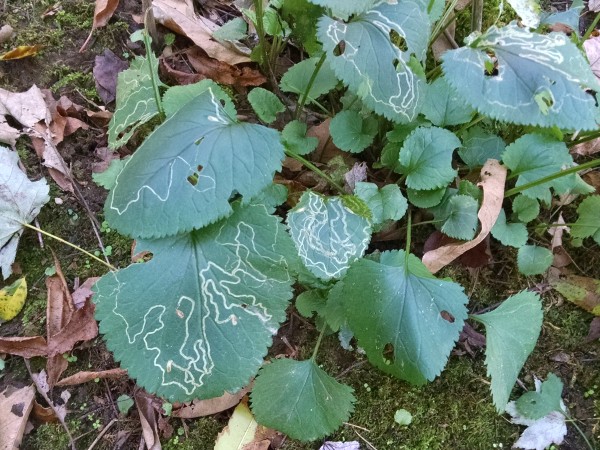
13 October 2015
Have you seen plain non-variegated leaves with unusual patterns like these? Did you know the patterns are caused by an insect?
Leaf miners are the larvae of moths, sawflies or flies (and a few others) that eat leaf tissue within the leaf.
The process begins when an adult insect lays her eggs on the leaf. When the larvae hatch they eat a tunnel between the top and bottom surfaces and the leaf turns white where it’s been mined. The mining squiggles are so unique that entomologists can identify the insect species by the pattern it makes.
In 2009 botanists discovered a healthy plant in the Ecuadoran rain forest whose leaves appeared to have leaf miner damage but did not. They wondered if the pattern was a signal so they painted similar white trails on green leaves and compared leaf miner damage on three kinds of leaves: green, naturally variegated, and fake-variegated.
The results showed that variegation is a mimicry defense against insect invaders. When an adult leaf miner sees a leaf that looks eaten, she won’t lay her eggs on it.
So that’s one reason why plants have variegated leaves.
(photo by Kate St. John)
Yes! Very cool!